Posted by Elena del Valle on May 27, 2016
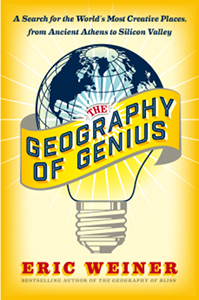
Geography of Genius
Photos: Simon & Schuster, Justin Tsucalas
Travel enthusiast and journalist Eric Weiner has become convinced there are clusters of geniuses around the world. The connection between our surroundings and our most innovative ideas, according to him, is notable in the present day and throughout history. In The Geography of Genius (Simon and Schuster, $26.95), a hardcover book published this year he explains what he has discovered during his travels. The book required four years of effort from idea to publication.
But, who is a genius? Weiner defines the term, “A genius is not simply someone with a high IQ, a know-it-all. A genius is a see-it-all. That is, someone who makes a conceptual leap and, in doing so, produces something useful or beautiful.”
When asked by email who might want to read his book he said, “Anyone interested in creativity and innovation. Or history, for that matter. Or just a good read. I pride myself on taking complex subjects, like genius, and simplifying them without over simplifying them.”
As to w hy he believes creativity begins at home, the author said,
“If creative genius is a function of place, as I argue it is, then there is no more important place than home. It is where we learn how to interact with the world. As parents, this is a big responsibility. Our children learn more about creativity by simply being a part of a family than they do from all of the ‘creativity exercises’ combined.”
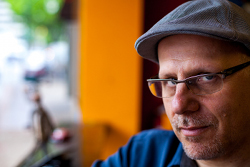
Eric Weiner, author, The Geography of Genius
As to what he means when he says creativity is a relationship that unfolds at the intersection of person and place, he said,
”
We tend to think of creativity as taking place in isolation. The myth of the lone genius is the best example of this, but it is just that, a myth, Creativity always takes place within a certain context. (and a certain time.) Freud’s radical theories about the human mind, for instance, could only have taken place in Vienna of 1900. The place, and time, were ripe for his ideas. Without this ripeness, even the most brilliant idea will die on the vine.”
For those who want to foster geniuses what are the essential elements?
Weiner believes t
hey are: Diversity, Discernment and Disorder.
“Places that are diverse–not only ethnically but also intellectually–are the most creative,” the author said. “They are like a rich and flourishing rain forest, as opposed to a desert. We need tolerance but we also need discernment. Not all ideas are good ones. Creative people don’t get attached to the bad ones. They are willing to ‘kill their darlings’ and move on. A certain degree of disorder, of chaos, even, is essential for a creative place and a creative person. Chaos is the bridge between old orders and new ones. Innovative people embrace it.”
The biggest challenge to writing the book was finding the right balance, between depth and accessibility, humor and seriousness, personal observations and universal truths, he explained.
“The greatest reward is when I receive an email from an appreciative reader who tells me that my book changed her life, in some way, large or small,” he said when asked what was the greatest reward to writing his book. “Ideally, I managed to get her to think about a familiar topic in a a fresh way, That’s what it’s all about.”
Weiner writes a regular column for BBC Travel. Prior to this book he wrote three books including, The Geography of Bliss, a The New York Times bestseller translated into 20 languages. Weiner is the recipient of the Borders Original Voices Award, and a finalist for the Barnes & Noble Discover Award. As a long-time foreign correspondent for National Public Radio, he reported from more than 30 nations, from Iraq to Indonesia, covering some of the major international events of recent times. His next book, still untitled, will be about practical philosophy.
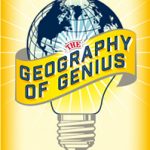
Click to buy The Geography of Genius
Comments:
Filed Under: Books
Posted by Elena del Valle on May 18, 2016

Click to enlarge
Photos: Ecosia
Ecosia, a Berlin, Germany based search engine, has between 2 and 2.5 million monthly active users who submit about 750,000 searches a day. The company’s search results and ads are powered by Bing. What makes the company special? In a world where it seems everyone is driven by greed alone, Ecosia donates 80 percent of its monthly profits ($50K to $80K each month) to planting trees in Brazil and Burkina Faso. Where the search engines keep track of users and their habits, Ecosia doesn’t.
“We don’t engage in any long-term saving or selling of personally identifiable user data,” said, Christian Kroll, chief executive officer and founder, Ecosia, by email when asked about the company’s privacy policies. “We believe that our users’ data and their privacy should be protected.”
Most of the search engine’s users are based in the Germany, Austria and Switzerland (DACH) region, where the company has captured 10 percent of non-Google users, followed by France and Spanish speaking countries, according to Kroll. Going forward he and his colleagues see the biggest potential in English speaking markets, and hope to eventually capture 2 percent of the global search market.
“We see Ecosia as a tool that allows users to capitalize on a daily habit (in this case searching the web) and do good without any further cost or effort on their side,” said Kroll. “We want to inspire others to come up with more business ideas like that and encourage them to use a share of their profits to support a good cause by proving that it’s actually possible.”
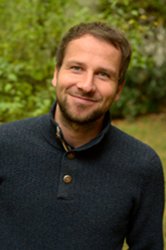
Christian Kroll, chief executive officer, Ecosia
“I decided to move to Berlin because it was closest to my family and offered (and still does) great opportunities for tech and green start-ups,” he said when asked about his choice of base. “The rent is very affordable, there are many creative and highly talented people from all over the world and people generally seem very open to topics like sustainability and shared economy.”
The entire Ecosia team is based in Berlin. There are 15 people, most of them full-time workers. Kroll founded the company in 2009 after traveling extensively. Despite several attempts it was not possible to speak with Kroll by phone in time for the publication of this note. Long term, the company aspires to plant 1 billion trees and end deforestation.
Posted by Elena del Valle on May 11, 2016
By Jay Gronlund,
President, The Pathfinder Group
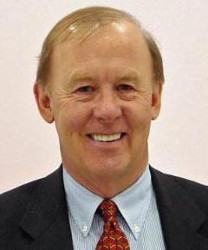
Jay Gronlund, president, The Pathfinder Group
The concept of brand equity (i.e. the perceived value of a brand) firmly arrived in the 1980’s when consumer goods companies reacted to a surge of cut throat discounting with a new search for a more sustainable way to boost sales and profits. The answer was to pour money into well-crafted brands, increase pricing, and highlight distinctive product features, all designed to create a more compelling brand image that would lead to greater loyalty. As David Aaker wrote in his book in 1991, “Managing Brand Equity”, aggressive marketing is needed to generate awareness, create a positive perception of relevant brand qualities, and grow loyalty, the three pillars of brand equity.
Click to read the entire Importance of Engaging Hispanic Millennials for Strong Brand Equity
Posted by Elena del Valle on May 6, 2016
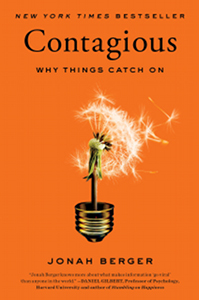
Contagious
Photos: Simon & Schuster, Deborah Feingold
Jonah Berger, Ph.D., who teaches marketing at the Wharton School at the University of Pennsylvania, is convinced popular topics share identifiable commonalities. After spending 15 years studying and researching how social influence works and how it drives products and ideas to catch on he thinks he has uncovered some of the reasons that people talk more about some products and ideas than others. In Contagious Why Things Catch On (Simon & Schuster, $14.69), a New York Times bestseller title published in 2013 and named Best Marketing Book of 2014 by the American Marketing Association, he outlines his theories on the topic.
He says that while people don’t pay attention to advertisements, they listen to their peers. In his book, which took more than 10 years from idea to publication, he outlines six basic principles he is convinced drive things to become popular. He describes them as Social Currency, Triggers, Emotion, Public, Practical Value, and Stories.
Following an introductory chapter, he dedicates a chapter to each of the principles in his 244-page hardcover book. He cites examples of how a steakhouse executive got buzz for his restaurant by adding a luxury sandwich to his menu, why anti-drug commercials may have increased drug use, and why 200 million consumers shared a video about a blender.
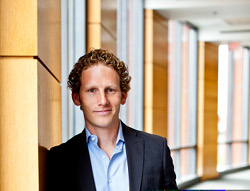
Johan Berger, author, Contagious
He wrote the book for “anyone who wants to get something to catch on. Might be a small business owner with a new service, a marketing manager launching a new product, or someone who wants to get others to change their behavior.”
When asked by email how he defines contagious for marketing purposes the marketing professor said it is “something that spreads from person to person via word of mouth.”
He shares surprising tidbits. For example, in the Leverage Game Mechanics section, he discusses how less than 10 percent of the estimated 10 trillion frequent flyer miles remain unused. In the Make People Feel Like Insiders section, he talks about the new found popularity of the McDonald’s McRib, which despite its name is made mostly of tripe, heart and stomach meat.
His second book, Invisible Influence: The Hidden Forces that Shape Behavior, on a similar topic is due out June 2016. One of the biggest challenges to writing and publishing the book, he said, was pulling all the research together.
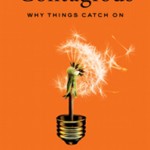
Click to buy Contagious
Comments:
Filed Under: Books


















